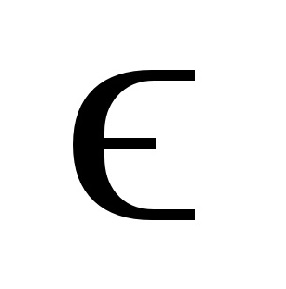Greek Character - Insert Greek Sign (Updated)
The Greek alphabet has been about because the early 9th to 8th century BC. It was the first alphabet to portray letters, vowels, and consonants.
The letters were both upper and lower case. Then the Greek alphabet was received from the Phonecian alphabet. The letters have developed individually and in societies over time to represent different things.
From the sciences to organizations to research the Greek Alphabet has been included in everyday use. The standard Greek letter is the Euclidean alphabet consisting of 24 letters from Alpha to Omega. Individual words have been used as symbols completely in ancient and modern times.
What is the Greek Alphabet?
Alpha
Alpha is the first letter of the Greek alphabet. The letter Alpha has been applied in engineering, physics, chemistry, mathematics, and science. The alpha symbol has been used to represent alpha particles and alpha rays in physics.
It is also used to represent absorption factor, angular acceleration, angles, common-base current qualification factor, attenuation, deviation of state parameter, thermal expansion, temperature coefficient of resistance, and thermal diffusivity in sciences and mathematics.
Beta
The character Beta from the Greek alphabet has a numeric equivalent of 2. The beta stage of software development follows the alpha phase.
This part of software development strength still carries some defects. Beta is the number of the International Phonetic Alphabet. In finance, beta is employed as a measure of risk. Beta rays and beta radiation happen in physics.
Gamma
Gamma is the third word of the Greek alphabet. It has a numeric value of 3. Lowercase and uppercase Gamma symbols are utilized to symbolize different things. Gamma symbol represents the Lorentz factor, which is the factor by which length, time, and relativistic mass change for an object while that object is moving.
Delta
Delta is the fourth word of the Greek alphabet, therefore, it has a numerical value of four. The name delta has been compared with river deltas because these fields are similar in shape to the Delta symbol.
The Delta symbol is also a symbol of the Holy Door of birth. The uppercase Delta symbol is done in science and mathematics as a symbol for change. It is also used to determine the discriminant of a polynomial.
Epsilon
The lowercase Epsilon symbol is also used to describe children. In computer science, the lowercase Epsilon symbol signifies the clear string.
Zeta
Zeta is the sixth letter of the Greek alphabet. It has a value of seven. Originally, there was different classical Greek letter in the sixth place of the alphabet.
During the 2005 Atlantic hurricane season, Tropical Storm Zeta split records by displaying the thirtieth tropical storm of that season. The symbol also serves stability numbers in physical chemistry. In quantum chemistry, the lowercase Zeta symbol describes the active nuclear charge on an electron.
Eta
Eta is the seventh letter of the Greek alphabet. Its numerical value is eight. The lowercase Eta symbol is used to represent hapticity in chemistry. It also describes the eta mesons in particle physics. The packing fraction and the ability of a Carnot heat engine are represented by the lowercase Eta in thermodynamics.
Theta
The Greek letter Theta is the eighth letter of the Greek alphabet. Its digital value is nine. The uppercase Theta symbol is used to represent a variable representing temperature difference in heat removal. It is also used to describe the dimension of temperature.
Iota
Lambda
Lambda is the eleventh letter of the Greek alphabet. Its numeric value is thirty. The lowercase Lambda symbol remained applied to start in 1970, in wake of the Stonewall rebellion, by the Gay Activists Alliance New York chapter. It is also several Gay Liberation.
The Lambda Literary Foundation and Lambda Legal, the Gay Rights Congress in Edinburgh also used the Lambda symbol.
Mu
The twelfth Greek letter, mu (μυ ) is written as Μ in uppercase and μ in lowercase. The mu symbol is used to represent many things in different scientific areas such as the Möbius function,
Nu
Nu (νυ ) is the thirteenth letter of the Greek alphabet written as Ν in uppercase and ν in lowercase.
Xi
Omicron
Pi
Rho
Sigma
Sigma is the eighteenth letter of the Greek alphabet. It has a numeric equivalent of two hundred.
The lowercase Sigma symbol is used to represent speed dispersion, cross-section, Pauli matrices, Stefan-Boltzmann constant, surface tension, a measure of electrical conductivity, normal stress, and the surface charge in physics.
Tau
Upsilon
Upsilon is the twentieth letter of the Greek alphabet. It has a numeric value of four hundred. The uppercase Upsilon symbol represents mass to light ratio and an Upsilon particle in science.
Chi
Chi is another weird one. Chi is basically capital X. The difference is that uppercase Chi looks like capital X. Lowercase Chi looks like a percent sign from far away, but it looks like a scripted capital X.
Phi
Phi is the twenty-first letter of the Greek alphabet. It has a numerical value of five hundred. The uppercase Phi symbol is used to represent the imaginary phallus in Lacanian algebra.
Omega
Omega is the current letter of the Greek alphabet. Its digital value is eight hundred.























Comments
Post a Comment